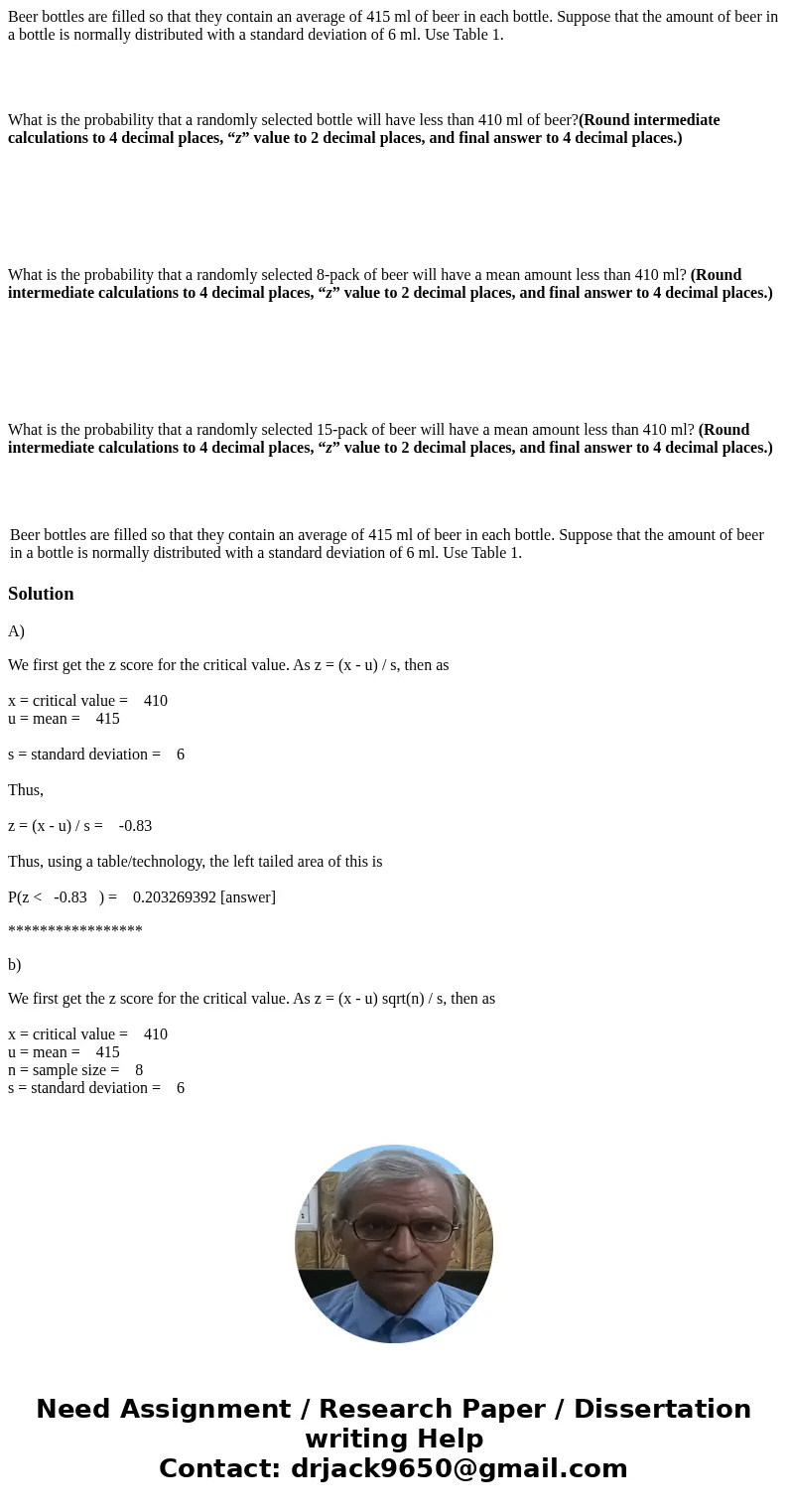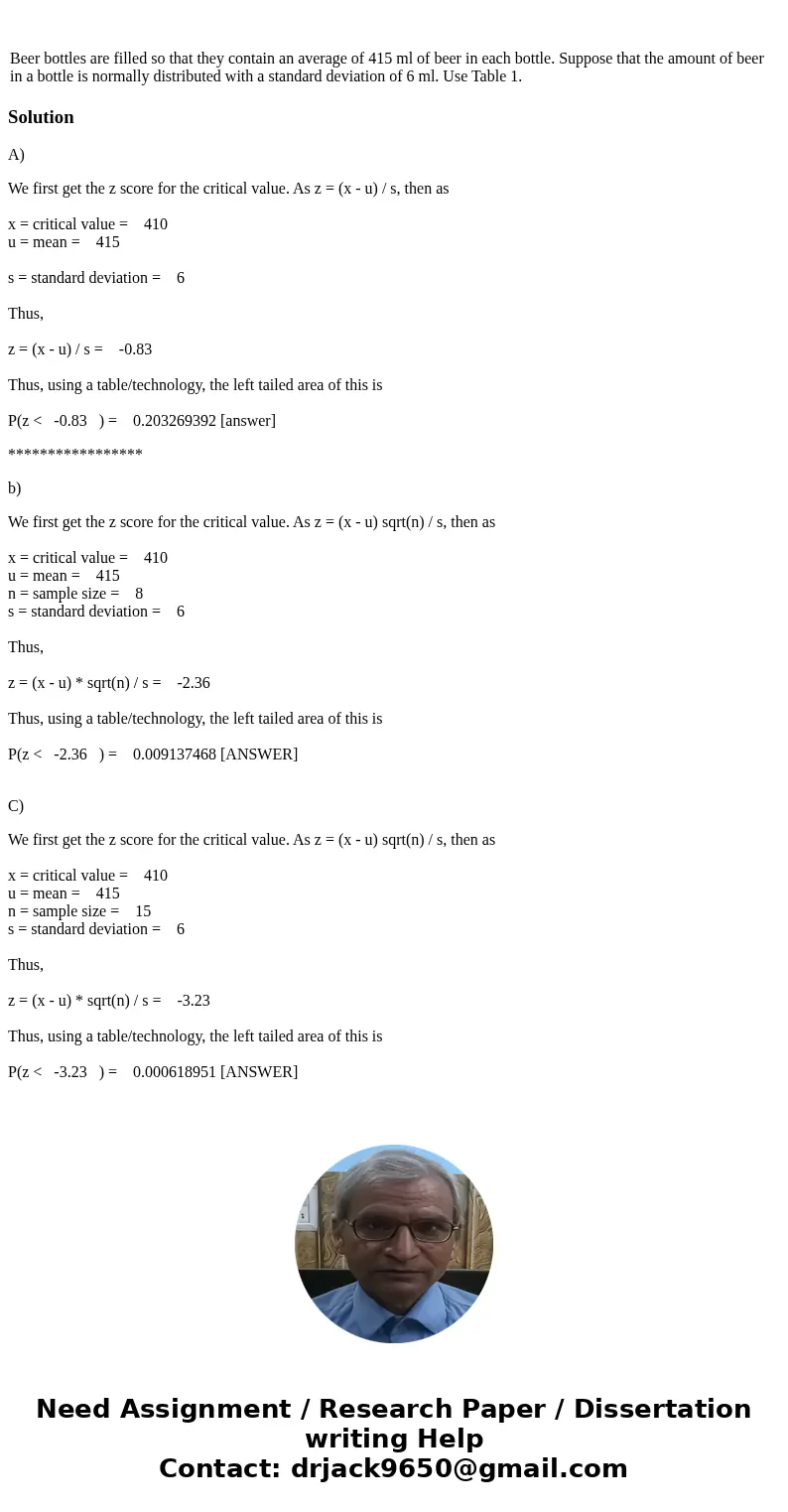Beer bottles are filled so that they contain an average of 4
Beer bottles are filled so that they contain an average of 415 ml of beer in each bottle. Suppose that the amount of beer in a bottle is normally distributed with a standard deviation of 6 ml. Use Table 1.
What is the probability that a randomly selected bottle will have less than 410 ml of beer?(Round intermediate calculations to 4 decimal places, “z” value to 2 decimal places, and final answer to 4 decimal places.)
What is the probability that a randomly selected 8-pack of beer will have a mean amount less than 410 ml? (Round intermediate calculations to 4 decimal places, “z” value to 2 decimal places, and final answer to 4 decimal places.)
What is the probability that a randomly selected 15-pack of beer will have a mean amount less than 410 ml? (Round intermediate calculations to 4 decimal places, “z” value to 2 decimal places, and final answer to 4 decimal places.)
| Beer bottles are filled so that they contain an average of 415 ml of beer in each bottle. Suppose that the amount of beer in a bottle is normally distributed with a standard deviation of 6 ml. Use Table 1. |
Solution
A)
We first get the z score for the critical value. As z = (x - u) / s, then as
x = critical value = 410
u = mean = 415
s = standard deviation = 6
Thus,
z = (x - u) / s = -0.83
Thus, using a table/technology, the left tailed area of this is
P(z < -0.83 ) = 0.203269392 [answer]
*****************
b)
We first get the z score for the critical value. As z = (x - u) sqrt(n) / s, then as
x = critical value = 410
u = mean = 415
n = sample size = 8
s = standard deviation = 6
Thus,
z = (x - u) * sqrt(n) / s = -2.36
Thus, using a table/technology, the left tailed area of this is
P(z < -2.36 ) = 0.009137468 [ANSWER]
C)
We first get the z score for the critical value. As z = (x - u) sqrt(n) / s, then as
x = critical value = 410
u = mean = 415
n = sample size = 15
s = standard deviation = 6
Thus,
z = (x - u) * sqrt(n) / s = -3.23
Thus, using a table/technology, the left tailed area of this is
P(z < -3.23 ) = 0.000618951 [ANSWER]


 Homework Sourse
Homework Sourse